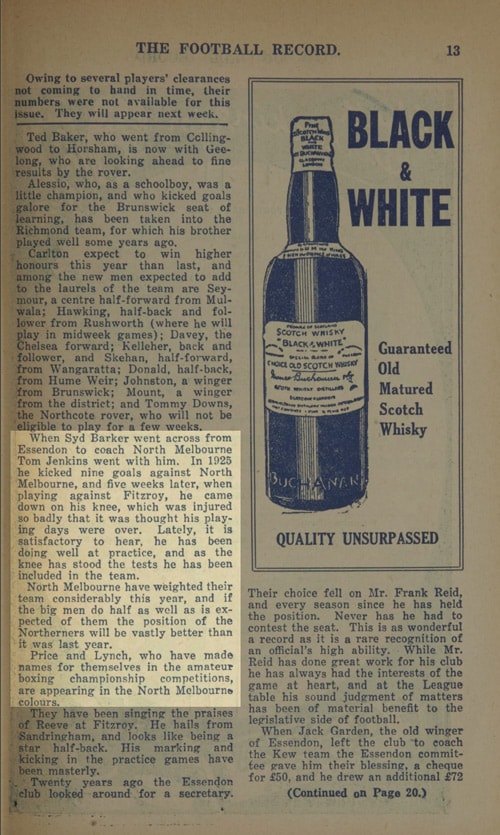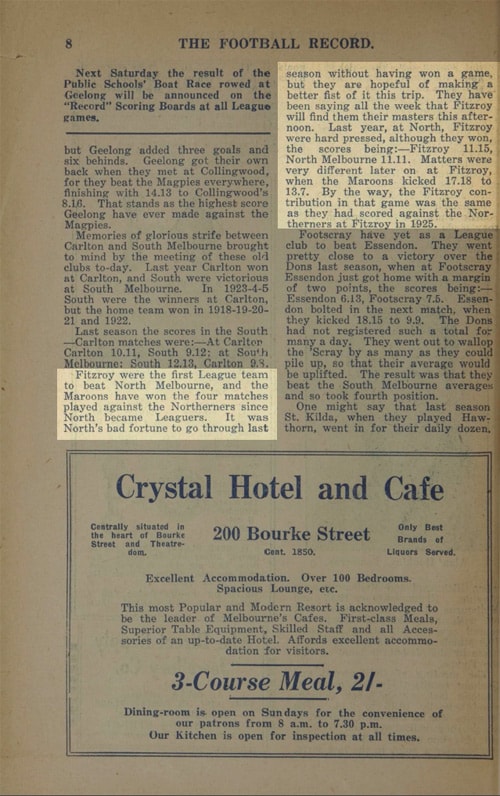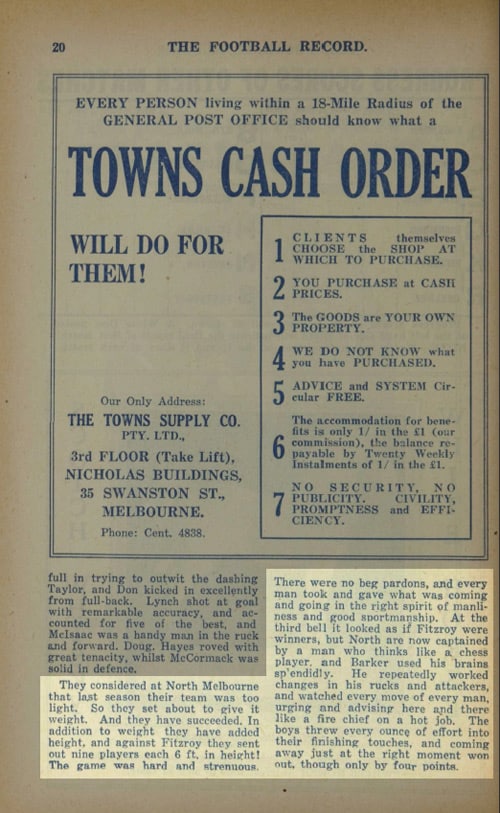The club’s first two seasons in the VFL were nothing to write home about. Five wins in 1925 was encouraging, but the Northerners went throughout 1926 without a single victory.
It seemed like nothing could go right; North remarkably lost four games in a row by less than 10 points, and drew against a fellow league inductee from two years before, Hawthorn. With just two points for the year, it finished a long last.
Nevertheless, there was optimism heading into the following season as this except from the Round 1 Football Record suggests.
 |
The return of Syd Barker, one of North’s greatest players from 1909-1921, breathed new life into the club.
Barker had spent four years at Essendon before re-joining his old club as captain-coach, at the age of 39.
He brought with him Tommy Jenkins. At 175 centimetres, and close to 96 kilograms, he was considered a rugby player in a footballer’s body. Jenkins had represented North in the VFA days before moving to Essendon.
He kicked 37 goals in 9 games in 1925, including a career-high 9 against North Melbourne, but after hurting his knee it was a year and a half before he pulled on the boots again.
Price and Lynch, local amateur boxers were considered likely starters but didn’t take their place in the opening round of the 1927 season, as North hosted Fitzroy.
While Fitzroy had won all four matches between the teams previously, the home team, often referred to as the ‘Blue Birds’ were fancied a strong chance.
 |
Fitzroy led for most of the day and had a 10-point buffer at the final change, but it was North that finished the stronger, winning by four points.
Jenkins kicked two goals, and 10,000 fans witnessed the Northerners’ first win in over 19 months.
Don Watson was named best-on-ground at half-back, with The Football Record reporting there was ‘none superior to him’.
The following week’s match report painted a picture of the significance of the victory.
 |
It was the start of a mini-run for North, defeating Essendon the following week for the first time in its history and in Round 4 registering its highest league score against Hawthorn.
A 77-point victory repelled Barker’s team to the top of the ladder – an amazing feat. But it didn’t last. North lost its last 15 matches and finished second-last.
Jenkins’ return was short-lived. He played just two more matches before his retirement. The player he could have become was struck down by injury.
Barker coached just the one season, but his achievements would never be forgotten. After he passed away due to illness in 1930, it was just seven years before the club started acknowledging the club’s fairest and best player with the ‘Syd Barker Memorial Trophy’, which from 1970 was recognised with a medal.
Watson, the star of the game played a further two seasons, but like many other players of his time, his career was over at a young age. He only played until 24.
North didn’t defeat Fitzroy again until 1932, when six goals from Tom Fitzmaurice saw it come back from a two-point deficit at three-quarter time to win by 19.


